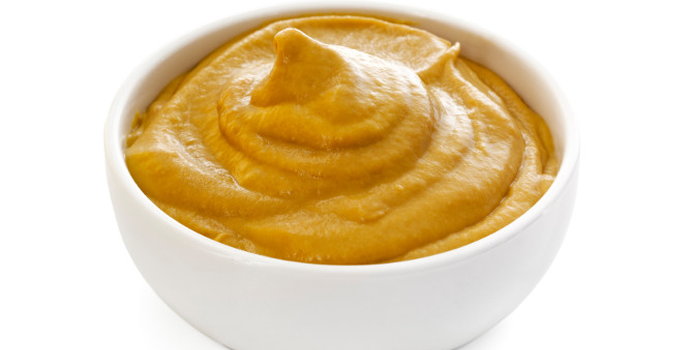Mustard has long been used as a favorite condiment by people who want to add extra flavor to their hot dogs, meats and other foods; yellow mustard is just one type of condiment to use. Mustard comes from the seeds of a mustard plant, and it is made by combining them with vinegar, water, spices and flavorings. The end result is a thick paste that varies in color from brown to a rich yellow. Because of the different types of mustard available, there are considerations that you have to watch out for before selecting your type, especially with regards to health. Dijon mustard and yellow mustard are just two of the kinds of mustard that you can buy.
Characteristics of Dijon Mustard
Dijon mustard, ironically, is mainly manufactured outside the French city of Dijon today. Its origin goes back all the way to 1865 when Jean Naigeon played around with the traditional recipe of mustard. Instead of using vinegar, Naigeon utilized verjuice (which is the acidic juice of insufficiently ripe grapes) in his recipe, and Dijon mustard came into being. Wine also figures prominently in a bottle of Dijon mustard, with Burgundy wine and white wine typically used. Nutrition-wise, one teaspoon of Dijon mustard will net you 5 calories and 120 milligrams of sodium, which is noticeably high. Other than that, Dijon mustard contains no health benefits since a typical serving has no iron or vitamins of any kind. Some brands have very little potassium, but this is insufficient to offset the deleterious influence of the calories and especially the sodium content.
Characteristics of Yellow Mustard
The claim to fame for yellow mustard is that it is the most popular and widely used mustard in the entire US. Travel outside of the country, and yellow mustard becomes known as American Mustard. If you don't like the increased spiciness and sharpness of Dijon mustard, then yellow mustard is a great alternative because it is mild. Taking its vivid, yellow color from the inclusion of turmeric, yellow mustard was first called cream salad mustard by George T. French, all the way back in 1904. This type of mustard features only 56 milligrams of sodium for a one teaspoon serving, along with very negligible amounts of carbohydrates, fat, dietary fiber, sugars and protein.
A Matter of Personal Preference
Like with so many things in life, picking Dijon mustard over yellow mustard, or vice versa, is a matter of preference. The main differences are health-related, but these are in such small quantities that it may well prove negligible to make a decision between Dijon and yellow mustard due to health concerns. Yellow mustard has lower sodium content, but other than that, there is no further difference in terms of healthiness. The real difference comes down to taste preference, with Dijon being sharper and having a more tangy taste, while yellow mustard is milder.



